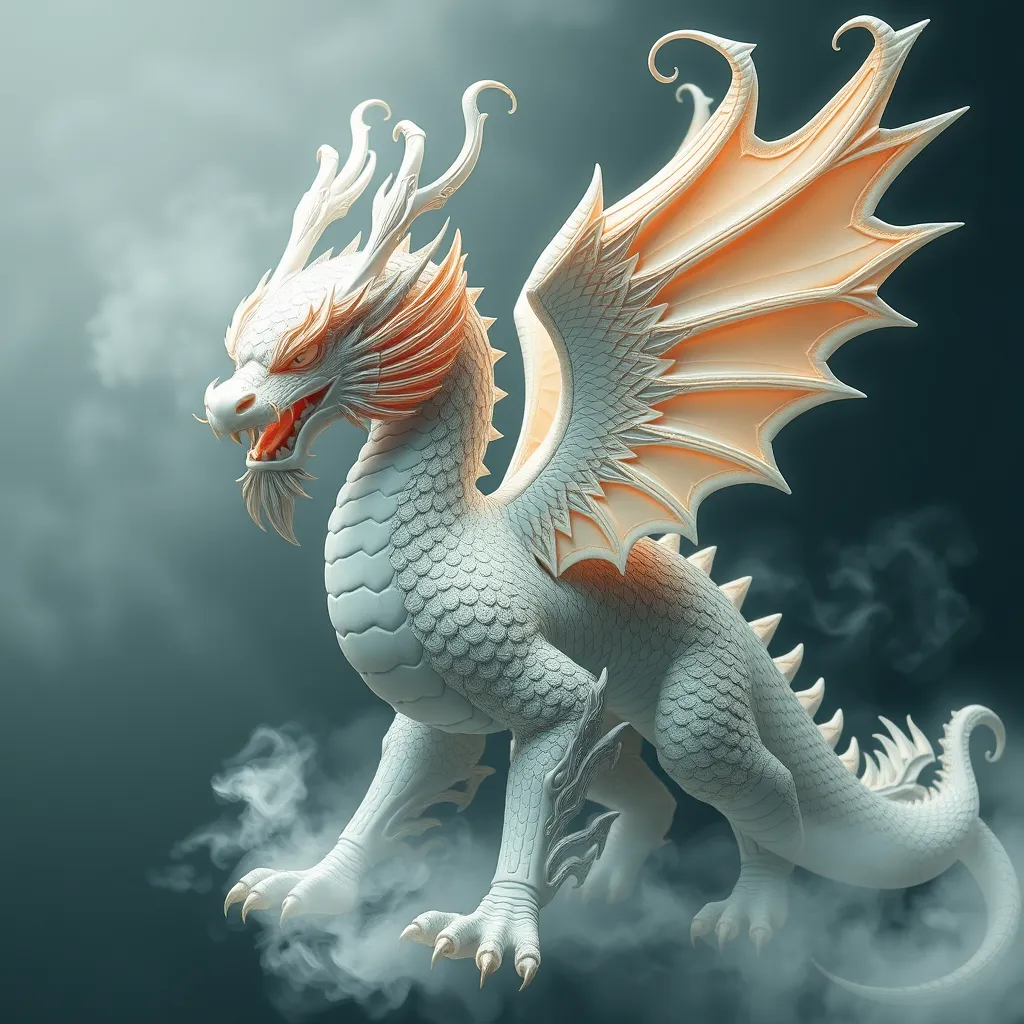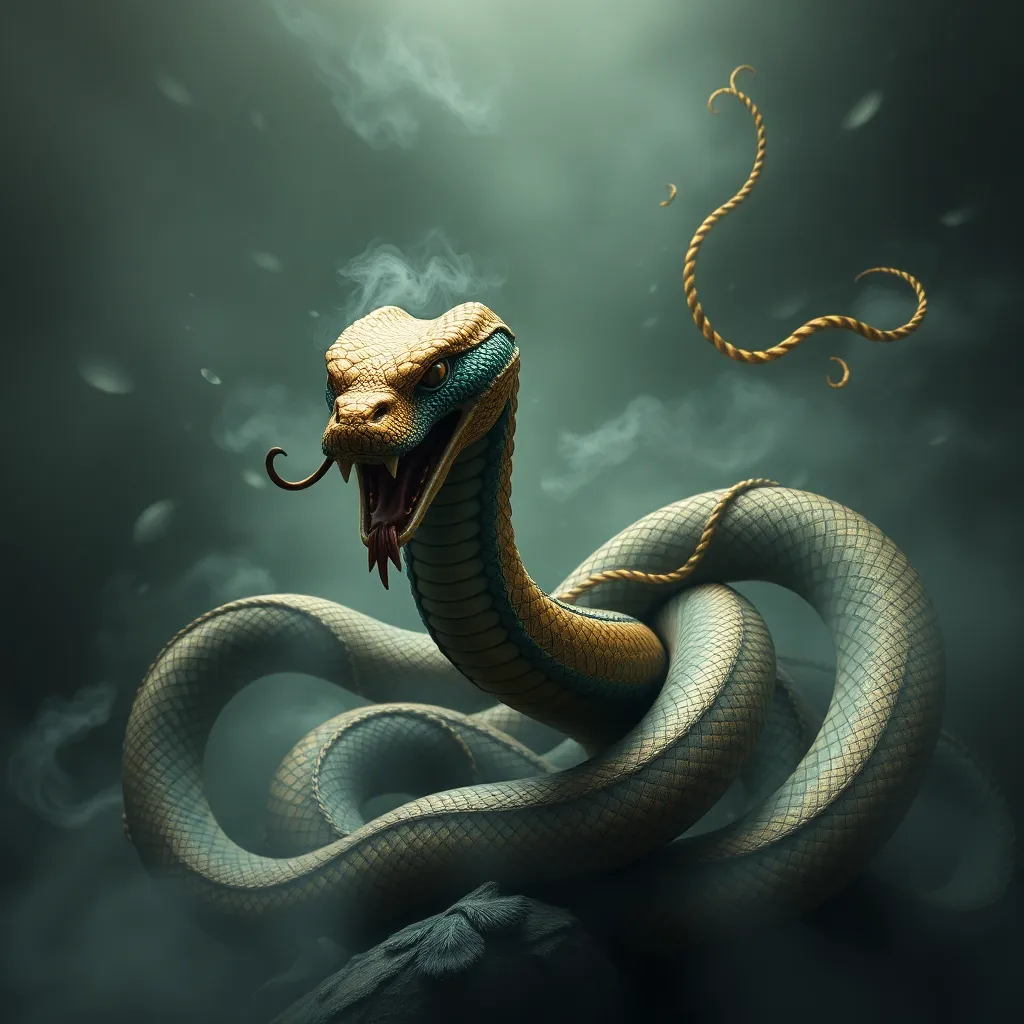The Chinese Griffin: A Fusion of Mythological Creatures
I. Introduction
The Chinese Griffin, known as “Qilin” in Mandarin, represents a fascinating amalgamation of various mythological elements, drawing from both local and foreign influences. This hybrid creature embodies the essence of strength, protection, and benevolence, making it a significant figure in Chinese folklore.
Mythological creatures hold a crucial place in Chinese culture, serving as symbols of moral and ethical values, as well as embodiments of natural phenomena. They provide insight into the beliefs, aspirations, and historical experiences of the Chinese people.
This article aims to explore the historical background, characteristics, cultural significance, and contemporary relevance of the Chinese Griffin, shedding light on its enduring legacy within the realm of mythology.
II. Historical Background of the Griffin in Chinese Mythology
The concept of the Griffin has its roots in various global mythologies, often depicted as a creature with the body of a lion and the head and wings of an eagle. This powerful symbol has been associated with strength, protection, and divine authority across cultures.
In China, the Griffin was introduced through cultural exchanges, particularly during the Silk Road era. As trade flourished, so did the sharing of mythological stories and symbols. The Griffin began to adapt to the unique landscape of Chinese mythology, evolving into the Qilin, a creature that combines aspects of different animals.
Over time, the Griffin’s image transformed, influenced by local beliefs and artistic expressions, resulting in a distinctly Chinese interpretation that fused indigenous elements with imported mythology.
III. Characteristics of the Chinese Griffin
The Chinese Griffin, or Qilin, is often described as having the body of a deer or horse, the scales of a dragon, and the head of a lion, adorned with antlers. Its appearance is both majestic and otherworldly, symbolizing purity and grace.
- Physical Appearance: Typically depicted with a vibrant, multicolored body, the Qilin is adorned with flames and cloud motifs, representing its divine origin.
- Symbolism: The Qilin is associated with auspicious events, often appearing during the reign of benevolent rulers or the birth of enlightened leaders.
When compared to Western griffins, the Chinese Griffin differs significantly in its symbolism and cultural roles. While Western griffins are often portrayed as fierce guardians of treasure, the Qilin is seen as a gentle bringer of good fortune and prosperity.
The cultural significance of the Qilin’s features lies in its representation of harmony between different natural and mythical elements, embodying the ideals of balance and peace.
IV. The Chinese Griffin in Art and Literature
The Qilin has been a prominent subject in traditional Chinese art, often depicted in paintings, sculptures, and textiles. Artists have celebrated its beauty and elegance, integrating it into various forms of artistic expression.
In literature and folklore, the Qilin frequently appears as a divine messenger or a harbinger of good news. Stories recount its appearances during significant historical moments or the arrival of wise leaders.
Moreover, the Qilin plays a pivotal role in conveying moral lessons, often symbolizing the triumph of virtue over evil. Its presence in narratives serves to inspire ethical behavior and reinforce societal values.
V. The Griffin as a Cultural Symbol
As a cultural symbol, the Qilin represents power and protection. It is often associated with the imperial authority in ancient China, believed to bring peace and prosperity to the land.
- Astrology: The Qilin is linked to certain zodiac signs, embodying traits such as wisdom, kindness, and courage.
- Feng Shui: In feng shui practices, the Qilin is used as a protective symbol, believed to ward off negative energies and bring good fortune.
In contemporary interpretations, the Qilin continues to inspire artistic and cultural expressions, reflecting a blend of tradition and modernity. Its image can be found in various media, from fashion to film, highlighting its adaptability and enduring appeal.
VI. Comparative Analysis with Other Mythological Creatures
The Qilin shares similarities with other hybrid creatures in Chinese mythology, such as the dragon and the phoenix, both of which also embody auspicious qualities and divine attributes. These creatures often reflect the cultural narrative of harmony and balance between different forces.
In contrast, the Western griffin, while similarly powerful, tends to symbolize a more aggressive protective force, often depicted as the guardian of treasures rather than a benevolent figure. The differences highlight the distinct values and beliefs that shape each culture’s mythology.
Understanding these comparisons provides insight into the narratives and symbolism that resonate within different cultural contexts, revealing how societies interpret and integrate mythological elements into their worldviews.
VII. The Contemporary Relevance of the Chinese Griffin
In modern China, there has been a revival of interest in mythological creatures, including the Qilin. As cultural heritage gains prominence, the Griffin’s image is often invoked in discussions about identity and tradition.
The Qilin’s presence in popular culture and media, including films, literature, and fashion, reflects its continued relevance in contemporary society. This resurgence signifies a reinvestment in cultural roots and a celebration of national identity.
The implications for cultural identity and heritage are profound, as the Qilin serves as a reminder of the rich tapestry of Chinese mythology, encouraging new generations to explore and embrace their cultural narratives.
VIII. Conclusion
In summary, the Chinese Griffin, or Qilin, is a multifaceted creature with deep historical roots and cultural significance. Its evolution from a global symbol to a uniquely Chinese entity illustrates the dynamic nature of mythological narratives.
The lasting legacy of the Qilin in mythology underscores its importance as a symbol of virtue, protection, and prosperity. As interest in mythological studies continues to grow, future research may uncover even more layers of meaning and relevance surrounding this fascinating creature.



